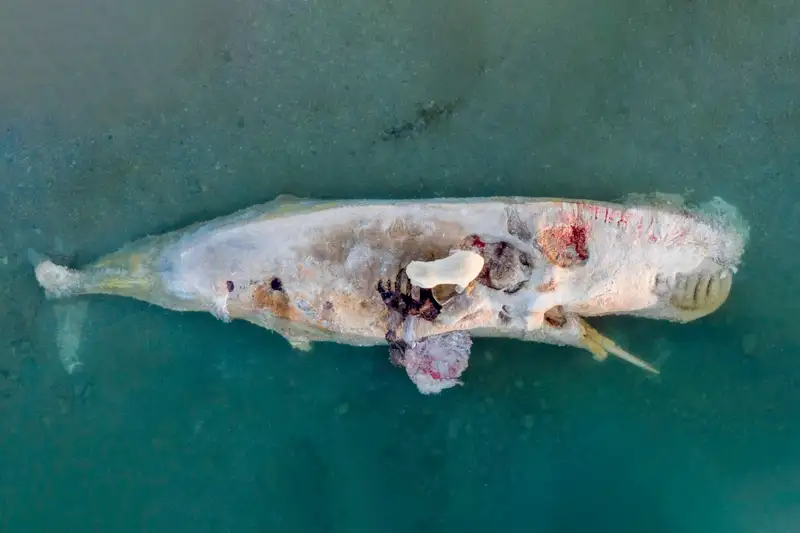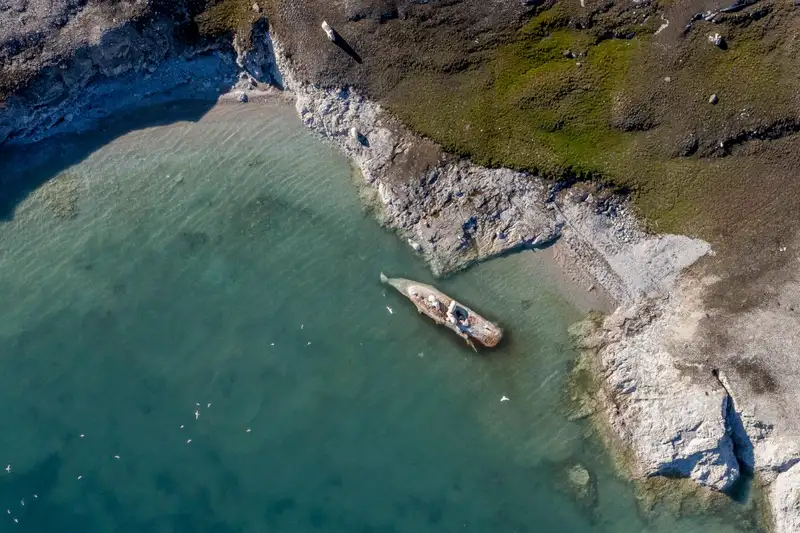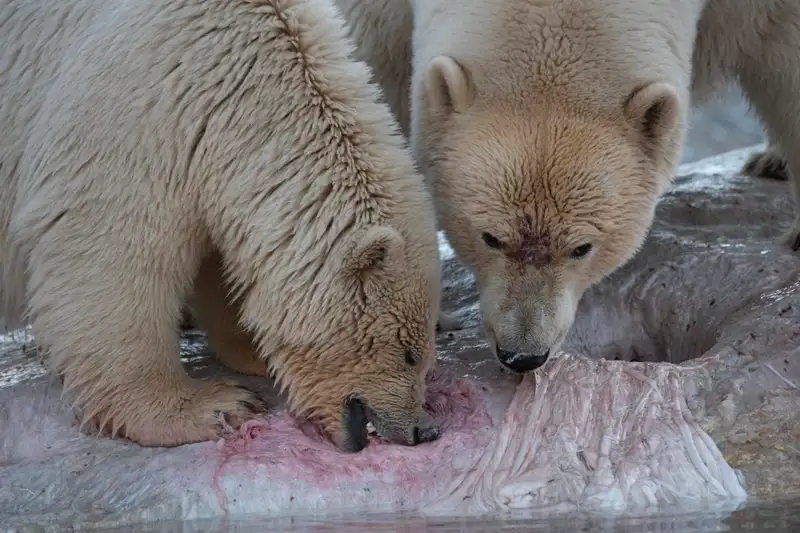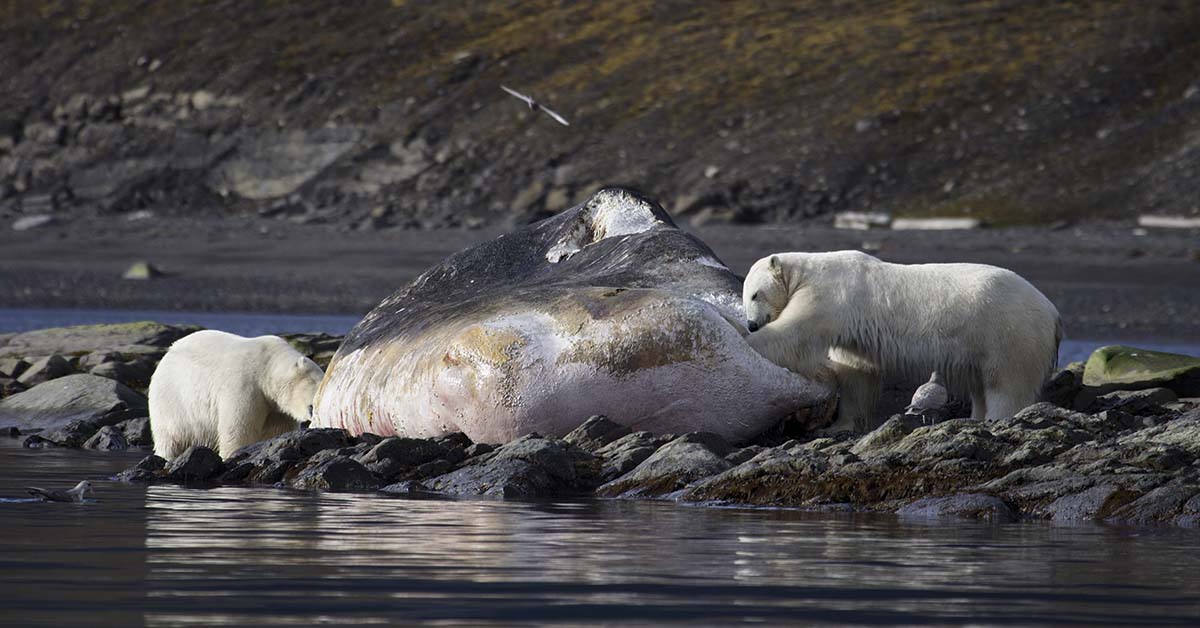Polar bears in the Arctic struggle more and more to get a good meal. Sea ice is declining because of climate change, forcing polar bears to retreat to land, away from their main prey of seals. Then a dead sperm whale appeared on a beach in Svaldbard, Norway, providing a well-needed meal for the bears. This majestic scene was captured by wildlife film-maker Jeff Wilson who was in the area directing the Disneynature film Polar Bear. “Luck in Svalbard comes in the form of manna from heaven,” he said. [1]
Polar Bears Feed on a Massive Whale
Wilson explained that when there’s enough food, there’s little competition between the bears. “That’s when you get really interesting interactions,” he said. “It was just a whole bunch of bears happy in their own skin, playing with one another.” And this sperm whale may have been feeding bears for two years. It has re-appeared after winter ended and the ice melted. “We believe there’s about 3 billion calories in a sperm whale,” he said.

While this plentiful meal can satiate the polar bears for now, their population is still at risk. “[Their] future is very bleak,” said Wilson. “Solutions depend on humanity shifting its lifestyle and energy consumption if polar bears are to have any chance at all.”
Polar bears live for about 25 to 30 years and weigh a whopping 900 to 1,600 pounds. They live in the Arctic and are extremely good swimmers. In fact, some were spotted swimming hundreds of miles from land, sometimes using sheets of ice as a floating device. Because of their freezing habitat, they rely on their thick fur coats and layers of fat to keep them warm. Even the bottom of their paws have fur to protect from the cold and help them grip ice. While they are known for their stark white coat that blends into their snowy environment, the skin underneath is black to attract the warmth from the sun.

As far as food goes, polar bears mostly prey on seals, frequenting areas of ice where seals may surface for air. But they would also eat carcasses, like dead whales in this case. These bears are the top of the food chain with no natural enemies. They don’t typically fear people, making those kinds of encounters extremely dangerous. [2]

Official Trailer | Disneynature’s Polar Bear | Disney+
Read: Rare Footage of Giant Phantom Jellyfish from 3,200 Feet Under the Sea
A Vulnerable Species
However, according to the International Union for Conservation of Nature (IUCN) red list, their status is considered vulnerable. The IUCN roughly estimates that the current global polar bear population is between 22,000 and 31,000. These numbers are unevenly divided into 19 subpopulations around the Arctic, ranging from 200 to over 2,000 in each area. These places range from Canada, Denmark, Norway, Russia, and Alaska.
They were first listed as a vulnerable species in 1982. The Agreement on the Conservation of Polar Bears protects them, a multilateral treaty signed in 1973 by the countries where polar bears live. This treaty prohibits unregulated hunting, including using aircrafts or large vehicles to kill them, and pressuring these nations to preserve the bears’ ecosystems. If polar bears were to go extinct, creatures like seagulls and Arctic foxes would lose a food source, and their prey — like seals, whales, reindeer, and birds — may become overpopulated. [3]
In 2008, polar bears became listed as a threatened species by the Endangered Species Act, enacting their protection in the U.S. Similarly, they are partly protected by the U.S. Marine Mammal Protection Act of 1972.
How Climate Change Affects Polar Bears
It’s difficult to ascertain long-term data on polar bears, especially in certain areas. Therefore, there is not enough data to establish trends for this population. Nevertheless, there is a lot of evidence proving they are at risk.
For instance, the melting ice in the Arctic forces the polar bears away from seals. These bears often hunt over long distances for hours or days until they find a seal, if they manage to catch it. Despite being strong swimmers, they can’t catch seals while in the water. Waiting on the ice is their best strategy, and now that ice is shrinking by 13.2% every ten years, according to the U.S. National Oceanic and Atmospheric Administration (NOAA). This change affects some bears more than others; for instance, bears in the Western Hudson Bay numbered at about 1,200 in the 1990s but eventually fell to 800.
This species are generally slow to adapt, but some are learning. This includes invading human habitats to hunt through garbage, but this poses a major threat to the residents. Plus, exploring new territories can mean competition with other species like brown bears. For now, fighting climate change seems to be the best way to help increase polar bear populations.
Keep Reading: Study Finds That Cows Talk To Each Other and Show Compassion Just Like Humans
Sources:
- “Polar bears caught feeding on a whale carcass in breathtaking photos.” New Scientist. David Stock. May 25, 2022
- “Polar Bears.” National Geographic.
- “How Many Polar Bears Are There?” Tree Hugger. Russell McLendon. July 12, 2021

